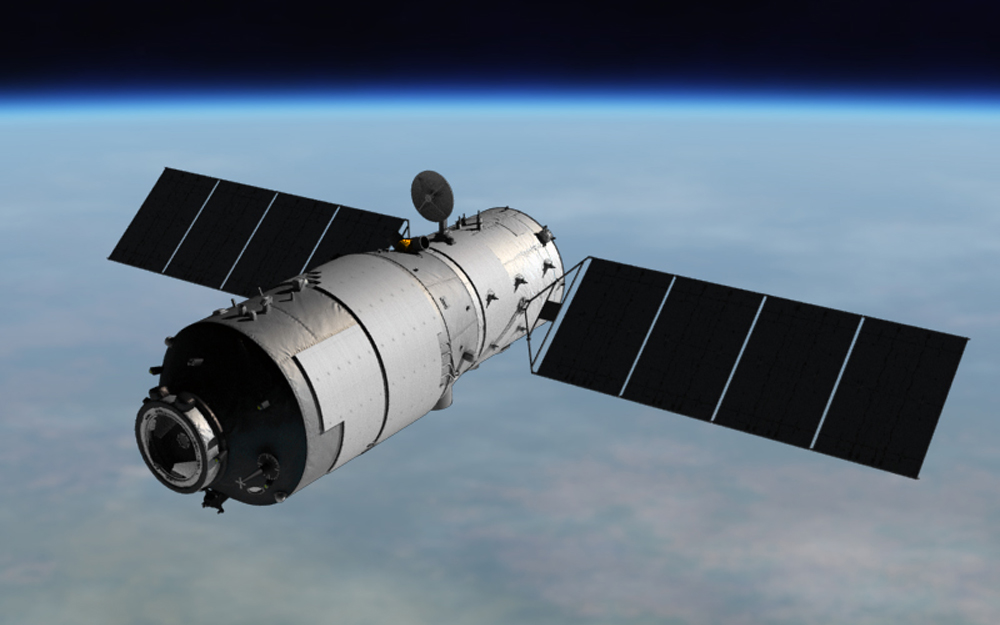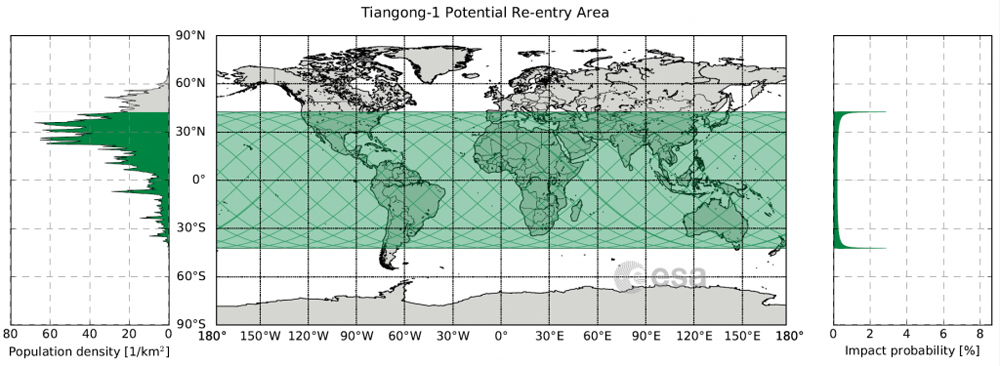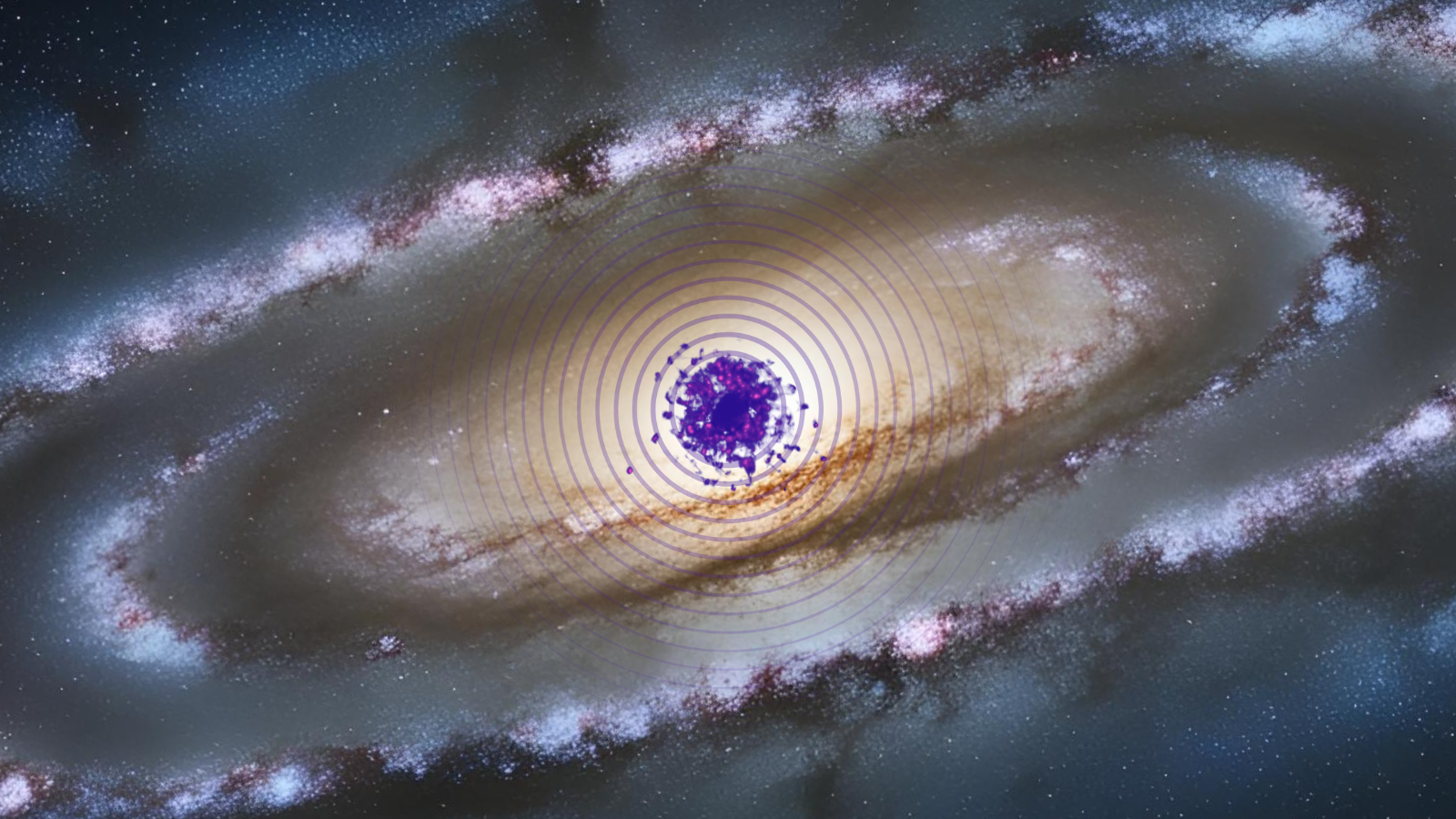Chinese Space Station Tiangong-1 May Fall to Earth Later Than Expected
Update for 6 p.m. EDT: Tiangong-1 is now forecast to re-enter Earth's atmosphere on April 1 at 12:15 p.m. EDT (1615 GMT), give or take 9 hours, according to the Aerospace Corp.
Original story: A doomed Chinese space station will fall to Earth later than expected due to changes in the sun's predicted activity, the European Space Agency's (ESA's) Space Debris Office in Germany predicted.
An updated ESA forecast issued today (March 30) said the 8.5-metric-ton (9.4 tons) space lab will fall to Earth later in the day on April 1. That's because the sun's activity is weaker than expected, ESA explained.
Tiangong-1's orbit takes the station very close to Earth's atmosphere right now. When the sun is more active, charged particles from the solar wind hit Earth's atmosphere, ESA officials said. These particles make Earth's gases balloon farther into space, increasing the gas density at higher altitudes. These gases, in turn, affect the drag Tiangong-1 experiences as it circles the Earth. [In Photos: China's Tiangong-1 Space Station]
The stronger the drag, the faster Tiangong-1 will fall. However, because the sun's activity is weaker than predicted, the atmosphere didn't balloon as much. Tiangong-1 will therefore experience less drag and descend more slowly than expected, ESA said.
"A high-speed stream of particles from the sun, which was expected to reach Earth and influence our planet's geomagnetic field, did, in fact, not have any effect, and calmer space weather around Earth and its atmosphere is now expected in the coming days," ESA officials said in the forecast.
"This means that the density of the upper atmosphere, through which Tiangong-1 is moving, did not increase as predicted (which would have dragged the spacecraft down sooner), and hence the ESA Space Debris Office has adjusted the predicted decay rate."
Breaking space news, the latest updates on rocket launches, skywatching events and more!
ESA emphasized that the re-entry window is still variable and uncertain. When the school-bus-size space station does fall, it will descend somewhere between 43 degrees north and 43 degrees south latitudes, underneath its current orbital inclination. This path includes many populated parts of the world, including the United States.
The station's unpredictable fall has attracted attention around the world, along with worries that space debris might crash into structures or people below. Under a United Nations treaty, liability would likely rest with China. That said, the chances of someone getting hit are infinitesimally small; you have a far better chance of winning the Powerball jackpot.
Harvard University astrophysicist Jonathan McDowell told Space.com's sister site Live Science that he predicts only 220 to 440 lbs. (100 to 200 kilograms) of debris from Tiangong-1 will make it to the planet's surface. Still, the space station will put on a spectacular show as it falls, he said.
"Fireballs are almost certain," said McDowell, a frequent commenter on Tiangong-1's descent who also works on NASA's Chandra X-ray Observatory. "What happens is that there are some dense sections of the lab connected together by a rather thin structure," McDowell added, explaining how the fireballs are generated. "The thin structure melts first, turning the lab into a bunch — a few to a few dozen, depending — of independent pieces which melt and burn more slowly — fireballs."
There are many past examples of satellites or space stations falling uncontrollably to Earth and generating space debris. Perhaps the most famous one is Skylab, a former NASA space station that dropped large pieces in rural Australia in 1979 as it fell. Skylab, however, was a much larger structure. Its mass came in at about 100 tons (90.7 metric tons), or about 10 times more massive than Tiangong-1.
Tiangong-1 was the first Chinese space station. After its launch in 2011, two crews of taikonauts (Chinese astronauts) visited the station, in 2012 and 2013. China remained in communication with Tiangong-1 until 2016. Since then, the station has been dropping slowly toward Earth for an inevitable, deadly (to the spacecraft) encounter with the atmosphere. China also has an active successor space station in orbit, called Tiangong-2, that launched in 2016.
Follow us @Spacedotcom, Facebook and Google+. Original article on Space.com.

Elizabeth Howell (she/her), Ph.D., was a staff writer in the spaceflight channel between 2022 and 2024 specializing in Canadian space news. She was contributing writer for Space.com for 10 years from 2012 to 2024. Elizabeth's reporting includes multiple exclusives with the White House, leading world coverage about a lost-and-found space tomato on the International Space Station, witnessing five human spaceflight launches on two continents, flying parabolic, working inside a spacesuit, and participating in a simulated Mars mission. Her latest book, "Why Am I Taller?" (ECW Press, 2022) is co-written with astronaut Dave Williams.


